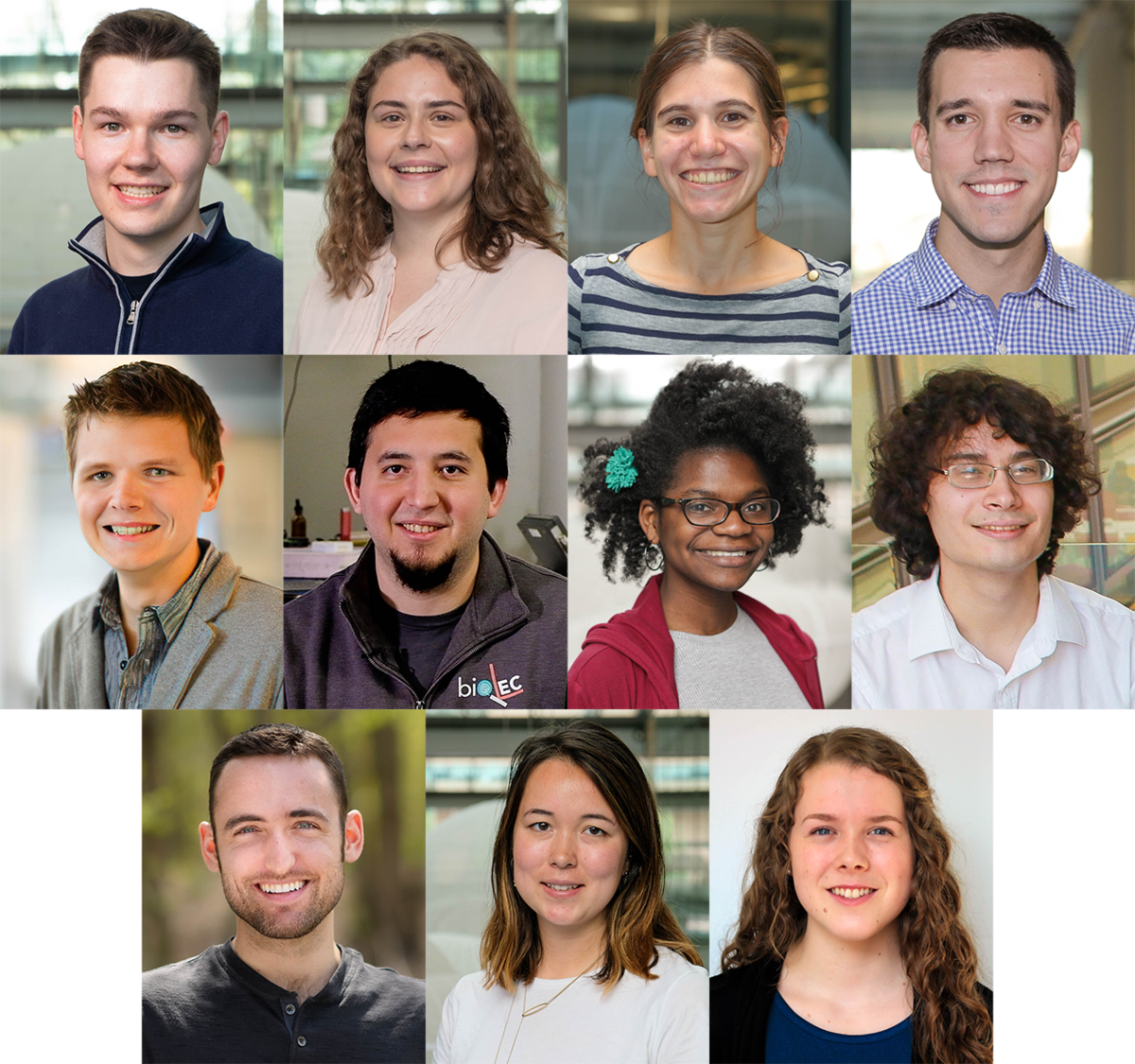Chemistry Adds Two New NSF Fellows to Roster
The Department of Chemistry is pleased to announce two new fellows in the 2020 National Science Foundation Graduate Research Fellowships Program (GRFP): James Cox and Johanna Masterson. Altogether, the Department boasts 11 NSF Fellows.
The Program recognizes outstanding graduate students who are pursuing research-based Master’s and doctoral degrees in NSF-supported science, technology, engineering, and mathematics disciplines. Fellows receive an annual stipend and allowance that supports the pursuit of an advanced degree.
“This is a huge accomplishment for these students, and we’re always honored to partner with a funding agency that has had such a profound impact on the fields of science, technology and medicine in the United States,” said Graduate Program Manager Meredith LaSalle-Tarantin.
In honor of our graduate students’ achievements, listed below are the Department’s 11 NSF Fellows and the projects they are working on.

Photos by C. Todd Reichart, Sameer Khan, and José Martinez
James Cox is a first-year graduate student with the Knowles Group. He is currently working to develop a light-driven method to break down plastics that otherwise would accumulate in the environment. He hopes that the insights from the project developed in concert with his co-workers will inform the design of more degradable plastic materials in the future.
Johanna Masterson is a first-year graduate student with the Sorensen Group. She is currently pursuing the development of novel cyclization reactions toward the total synthesis of the sesquiterpenoid, Curvularol. Development of these methods will allow for a concise route to access Curvularol in order to enable studies of its activity as a potential anti-cancer therapeutic.
Leah Bushin is a fifth-year graduate student in the Seyedsayamdost Group. Her project focuses on the discovery of natural products from streptococcus bacteria. Specifically, she targets peptides that are biosynthesized by a class of uncharacterized metalloenzymes. In addition to uncovering new reactions and structural motifs, she explores the bioactivities of these molecules in their native context.
Stavros Kariofillis is a third-year member of the Doyle Group. His project involves the development of a mild and selective methodology for installing methyl groups onto aryl chlorides via nickel/photoredox catalysis. The “Magic Methyl Effect” has shown that the installation of methyl groups onto small molecule pharmaceuticals can dramatically boost their bioactivity, but most reactions require harsh reaction conditions or reagents. The group has focused their efforts on developing a mild reaction to circumvent these limitations.
Jacob Kautzky is a fourth-year student in the MacMillan Group. He is currently working on a collaboration with Merck to apply high throughput and machine learning techniques to improving a chemical reaction.
Bryan Kudisch is a fifth-year student in the Scholes Group. His research uses ultrafast spectroscopy to address challenges adjacent to physical chemistry, ranging from extracting dielectric properties within photoenzyme-active sites to uncovering how the electronic properties of diamagnetic aromatic chromophores change when subjected to magnetic fields up to 25 Tesla.
Netgie Laguerre is a third-year in the Hyster Lab. She is investigating the unnatural reactivity of ‘ene’-reductases through photoexcitation to perform asymmetric radical cyclizations and generate beta substituted lactams. In contrast to the classic net-reductive photo-enzymatic cyclization approach that the group reported last year, they are now able to access another realm of synthetic space through an alternative redox-neutral mechanism that also generates a versatile alkene functionality.
Timothy Middlemas is a third-year in the Torquato Group. He is working to develop new codes for studying the packing of ellipsoids and new analytical theories for describing stealthy hyperuniform systems. While these projects are fundamental and somewhat abstract in nature, Middlemas expects to be able to apply the insights gained to more practical material design questions in the future, and to tackle even more rigorous fundamental research.
James Oakley, of the MacMillan Group, is a second-year grad student. His research focuses on developing chemical platforms for the exploration of nanometer-scale biological interaction networks, or microenvironments. The group is currently applying these platforms to identify potential new drug targets for cancer immunotherapy.
Claire Page is a first-year in the Hyster Lab. She is currently working with fifth-year graduate student Simon Cooper on an enzymatic intermolecular radical alkylation; primarily, on optimizing the reaction and starting engineering efforts to improve yield and enantioselectivity.
Kelly Powderly is a third-year graduate student in the Cava Group. Her NSF-related research is synthesizing and magnetically, electronically, and structurally characterizing new materials, with a special focus on magnetic materials and superconductors. She utilizes both conventional solid-state synthesis methods and more extreme methods of high-pressure, high-temperature synthesis of metastable materials.
